You’re Getting Sleepy…
Inside a mall, next to Planet Hollywood in Las Vegas Nevada, six nights a week at 10pm, hypnotist Marc Savard puts on a comedy hypnosis show.
At the start of the show, volunteers are asked to come onstage to undergo a test of hypnotizability. Mr Savard then chooses a few of the participants he thinks are the easiest to “go under.” These select few become the entertainment for the night.
So of course I volunteered.
So there I am onstage, eyes closed. The hypnotist counted down from 10 to 1, each number representing a deeper dive into a state of relaxation. To be honest, as he counted down, I would intermittently cheat. I squinted my eyes open ever so slightly, so only the edges of light passed through to my retina-a blurred outline of the stage scene entered my sight. I saw a bunch of other people sitting around me who I assumed were also pretending to be relaxed. By the time we hit number 1, I was asking myself if I was wasting my time.
Next, Mr Savard asked us to pretend we were all part of an imaginary orchestra and told us to start playing an instrument. So I said to myself- “why not.? I’ll play along”. I started playing the piano- an instrument I actually know how to play. And then with his suggestion, I started playing it with more passion, more specificity. I imagined the chords and matched the beat of the music that was being pumped into the theater. Then suddenly the hypnotist asked us to “switch instruments!” I immediately changed to the drums and that’s when I really started to get into it. I started banging away- tapping on my imaginary hi-hat and snare, increasing to a crescendo of a fully realized drum solo. Playing my fake drums was fun- I was going to make it awesome, envisioning every beat of the tom-tom and crash of the cymbal. I was in a state of mind where it all seemed like a great idea. It wasn’t like I didn’t know what was going on. I completely understood where I was and what I was doing.
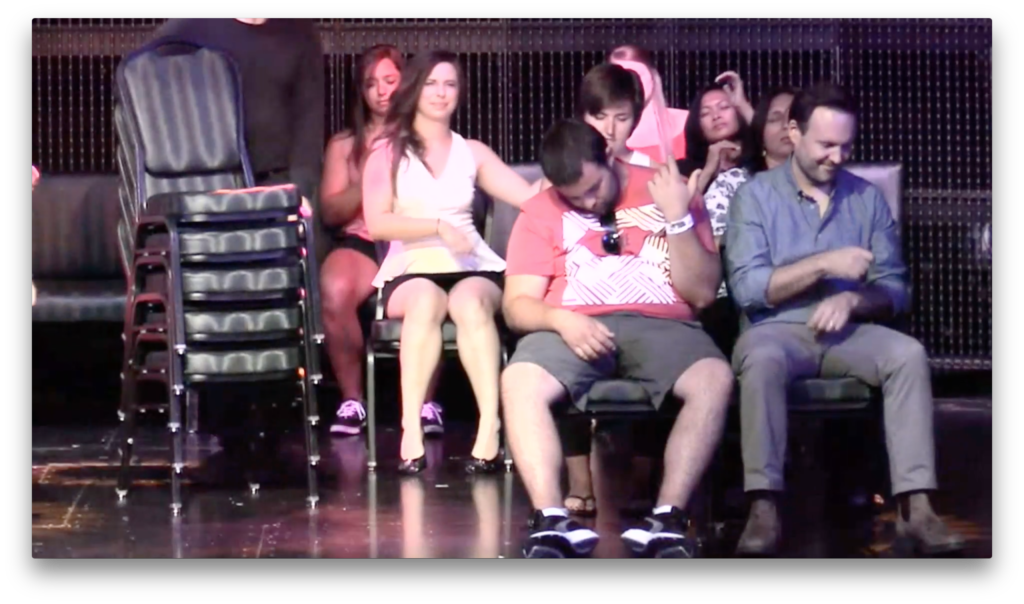
So was I hypnotized?
My mood was very similar to the times in my life where I may have indulged in a few too many cocktails. Think of it: You’re at a party and maybe your not a big dancer, but you have three amaretto sours and are feeling good- completely uninhibited. Someone suggests “hey- let’s dance on the pool table.” At that moment, it actually sounds like a good idea-so you move aside the eight ball and start twisting around the corner pocket. Then someone says, “hey lets go outside and jump in the fountain down the street at the University of Michigan Medical School”- so you run outside, jump right in, soaking all your clothes… because it sounded like a good idea. (That may or may not have happened).
That’s what it felt like when I was playing the drums onstage with Mark Savard. He suggested that I play with increasing passion and I responded because it just seemed like a good idea. That was all I was thinking about. I was intensely focused and concentrating only on my drumming, uninhibited by anything else around me. That’s apparently a simple description of a hypnotic state- extreme focus and concentration where you don’t recognize anything else that is going on around you. In this subconscious focused state of mind, a person is apparently very suggestible.
And as I was ready to add a cow bell to my drum solo, I was tapped on the shoulder by Marc Savard and snapped out of my fantasy.
My friends in the audience tell me I was one of the last people kept onstage until the final cutdown, until I was released back to the audience. I guess from the hypnotist’s experience I wasn’t under deeply enough to be a full participant in the show. Mark Savard says everyone can be hypnotized, but some folks transition into a hypnotic state more quickly and more deeply than others.
But was I actually almost hypnotized?
Well, those who remained onstage sure seemed like they were in deep. The hypnotist seemed to manipulate the actions of the people onstage at will. He asked them to do crazy dances, stripteases, sing, and act whacky. It was truly hilarious- way funnier than I expected. It almost looked staged it was so good. If the volunteers onstage were faking it, they would have been an unbelievably skilled group of comedy improvisors- as their jokes were perfectly timed and spontaneous. If you’ve ever seen a college comedy improv show comprised of inexperienced performers, you know just how painful bad improv can be. Good improvisation is not something a group of ten people could just achieve randomly. Also, it would impossible to perform a Las Vegas show nightly for over 10 years if the people brought onstage were not genuine ticket paying audience members. Half the enjoyment of the show is watching your friends act all nutty. So I knew there had to be something going on…
How does all this relate to medicine?
When we use hypnosis in a clinical setting we call it hypnotherapy.
Now, Hollywood hasn’t exactly enhanced hypnotherapy’s reputation. We see examples all the time on TV of hypnotists using their powers to bend the will of others. Think the movie Get Out or The Manchurian Candidate. After watching these films, you don’t exactly want to run out to the local hypnotherapist for a tune up- I mean he might make you into a sleeper agent for a foreign government.
In reality, there is some scientific evidence that hypnotherapy can help with weight loss, smoking cessation, acute and chronic pain, controlling the pain of childbirth, mitigating nausea with chemotherapy, and treating phobias. Most of the studies are small and inconclusive but trending toward being helpful. Some conditions have better outcomes than others, but overall hypnotherapy is a fairly well accepted treatment therapy and not super controversial. However, hypnotherapists are not licensed in most states- so standards and abilities probably vary between practitioners.
Honestly, I couldn’t place hypnotherapy in any context from the perspective of a physician. It was not even mentioned in medical school. Medical literature tells me it can be clinically useful, but I didn’t have any real life experience to lean on so it’s not something I could or could not recommend. It was a mystery me.
So I did what any scientist would do- I conducted a study. Of course my methodology has no scientific validity whatsoever, but this is a blog not a medical journal.
A completely unscientific study
Scott works promotions for the Fremont Street Experience in the old Downtown section of Las Vegas. They have a popular ride here called Slotzilla– a slot machine inspired zip line. Slotzilla is 114 feet high and shoots flyers 1700 feet over a canopy covered entertainment complex. It’s actually pretty cool.
Now Scott is in charge of promoting the ride and spends every day of his working life looking up at the thing, but he has never been on it. Why, you ask? Because he has a terrible fear of heights- what we in the clinical world term acrophobia. He can’t get over the wall of anxiety he gets just from the idea heights.
Now Scott says he had a fear of heights, but I wanted to know just how bad it really was- I mean most people don’t exactly love heights. Does Scott just experience normal expected concern for not plunging to his death? So in true physician tradition, I decided to make him undergo an uncomfortable test.
Step One: Establish a Diagnosis:
I forced Scott onto the elevator and rode it to the top of the 114 foot high Slotzilla. From the the ground, it was already evident Scott was anxious. As we approached the elevator door, you could see the angst erupt on his face. He wasn’t paralyzed by his fear, but the crack in his voice as he spoke and the clamminess of his hands told a story of his inner dread.

I don’t think those of us without a phobia can ever really understand how someone like Scott feels. Even those with phobias cannot understand why they are afraid. Phobias are not rational. Sure some people don’t like spiders, but if you know someone with diagnosed arachnophobia, simply the idea of a spider can be debilitating.
Scott wanted to get over his fear. He knew it was irrational. He says he never had a bad experience with heights in his life. He knew this ride was safe- there had never been a problem during it’s entire existence. But, he knew his fear was affecting his life- off the zipline. Sure a seemingly easy solution for Scott would be “Don’t go to high places”- but it was not that simple. Scott told me he felt like he was missing out on life. He didn’t want to be the guy that sat on the sidelines while everyone else enjoyed the rollercoaster. In fact a girlfriend once broke up with him because he wouldn’t go on an amusement park ride with her (probably for the best). His fear has impacted the way he perceives himself. He views himself as ‘the guy who sits on the sidelines’– the guy trapped by fear. It affects him on a far deeper level than simply not wanting to go on a Las Vegas ride.
So of course I made him ride up the elevator all the way to the top.
Scott thankfully did make it up without running away or passing out. Honestly, it was not like we were hanging from a precipice. It was a large platform probably 30 x 30 feet, completely walled in by a railing. Scott was a pretty good sport, but he admitted he was relatively composed only because he knew we would not being going down the ride. During our brief five minute tour of the top, he always held onto the railing with both hands, and a barely perceivable cold sweat dripped from his pores. When we returned to the ground, a sense of calm returned to him as the fear was washed from his body.
Step 2: The Intervention
So I determined to my satisfaction that Scott was truly afraid of heights. Now the question was, could a session of hypnotherapy help treat his phobia?
Marc Savard not only performs a great hypnosis comedy show, but on occasion and with some serious coaxing will conduct clinical hypnotherapy sessions. I got the opportunity to be invited to Mark’s house to witness a hypnotherapy session with Scott.
Many years ago at age 19, Marc was working as a respiratory therapist in a hospital and after teaching himself hypnosis developed a side gig doing comedy shows. He would travel around on the weekends and be the main act at a party or corporate gig. One night, at age 23, while on his way home from a show, his car was rammed by a drunk driver, flipped in a ditch, and caught on fire. Marc escaped the wreckage with a broken back and a fractured skull. After a few days in the hospital, blurry heady from all the pain pills he was taking, he decided to attempt to use the same hypnosis skills he had mastered for his comedy shows on himself to deal with the pain and help the healing process. After two days he was off pain medications and using the power of his mind to aid his own recovery. He was performing again within six months. He has since had a passion of promoting the power of the mind and hypnotherapy.
Usually in hypnotherapy, the hypnotist eases the subject into a relaxed state and then suggests ideas on how they can improve- a hypnotic suggestion. The subject sits there and for the most part passively listens. Marc, however, who I think may be an exceptionally talented hypnotist, took his hypnotherapy session with Scott in a very different and unexpected direction.
Didn’t see that coming
Marc and Scott sat across from each other. Marc then proceeded to go through a rather scripted speech slowly counting back from 10 to 1, asking Scott to progressively relax. Frankly, from a bystander’s perspective, nothing was all that remarkable. But then, on cue when Marc hit “1” and commanded Scott to completely relax, I witnessed a physical transformation in Scott. Scott fell into his chair, slumped over. The posture which he had dutifully maintained from numbers 10 until 2 in the countdown completely wilted. He lumped in his chair for a moment or two. Marc then asked him to open his eyes. Scott’s eyes were glazed over. He was awake and interactive inside the boundaries of his normal personality, but it looked like he had just smoked a bag of weed.
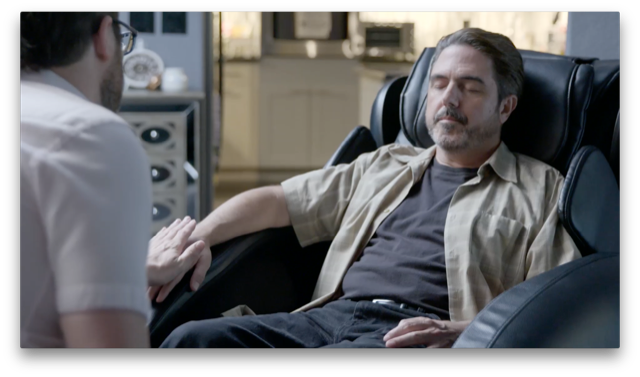
Marc then did something I will never forget. He asked Scott to gaze back into his memory and pinpoint a time in his life where he felt the same fear he suffered when he was on top of Slotzilla that morning. Without pause, Scott then envisioned himself at 20 years old. He was working on school production. He related his visions with exacting detail. It was if he was going back in time and witnessing events from his early 20’s- “Ebenezer Scrooge-style“, guided by “Ghost of Phobias Past” Marc Savard. He saw a female classmate of his, high up on a scaffolding, constructing stage lights for a school production. Then Scott relayed seeing his younger self saunter by and jokingly mess with the ladder leading up to the scaffolding. The whole contraption dangerously shook and his female friend let out a yelp of fear.
Then it got really interesting. The tears started to well down Scott’s face. I sat upright in my chair to try to understand what I was witnessing. Scott poured out emotion of deep regret. He placed this poor girl in danger- the scaffolding was “so high”, he said. It seemed like a cathartic self discovery for Scott. Honestly, it was kinda like watching a cliche scene in a movie. Like when Will Hunting admits it’s not his fault that he was beat up by his parents. “I know… I know… I know..” and then hugs Robin Williams.
Mark then instructed Scott to let go of that feeling of fear. He suggested that if he ever has fear like that again, instead of experiencing it, he could transform it- that he could transform his fear into laughter. Whenever a fear built inside of him, he would simply laugh instead. Thats was all. Then over a few minutes he brought Scott out of the hypnotic state. The whole session lasted less than thirty minutes from start to finish.
He woke up happy as a clam. He said he remembered everything Marc said to him and everything he said back. From Scott’s point of view it was as if he had a relaxing conversation with Marc. Interestingly Scott did reveal that before today he had no conscious memory of that event with the girl on the scaffolding. He remembered once being in a play, but that’s about it.
Mark Savard claims that for some issues, hypnotherapy might be a more effective treatment than is traditional talk therapy. Hypnotherapy can provide access to the memories we bury in the subconscious mind. For example, Scott could have spoken about his fear of heights for hours and hours, but he would have never accessed his story of the girl on the scaffolding because he just had no conscious memory of it happening. Maybe hypnotherapy provides a gateway into the subconscious mind where some of these issues of our past secretly reside? These issues can affect our conscious lives-in the form of phobias, anxiety or other issues. If you believe that there is in fact a subconscious mind that affects our waking self, then treating a subconscious problem with a subconscious tool makes intuitive sense.
Step 3: The Test of Change
That night we all returned to Slotzilla to take Scott up to the top again and zip down if he could.
I wasn’t quite sure what expect. I saw something happen to Scott during his hypnotherapy session, but would it produce any results?
Once I saw Scott show up at the base of the ride, I instantly knew something in him had fundamentally changed. He had no hint of the encompassing anxiety he displayed just that morning. As we approached the elevator, Scott was relaxed and cracking jokes, filled with a palpable excitement. He already knew he had conquered his fear. Scott even said he felt like he should be feeling nervous but he just didn’t and couldn’t explain it.
We all rode up the elevator together, Scott, Marc, and myself. It was really one of the more enlightening elevator rides of my life. Scott was a different man than he was that morning. As we rose higher and higher, he let out laugh after laugh- just how Marc had instructed him to do during his session. He transformed his fear into laughter. As we strapped into our harness and hooked into the ride, Scott belted out a laugh of joy. He couldn’t believe he was finally here and enjoying doing something he had been searching for the courage to do for a long long time. Except he didn’t need courage, because it wasn’t scary to him anymore.
As we shot out onto the zipline, Scott screamed out in joy- “This is amazing!! Wow! I love the town!” It was as if in that one ride, he released the fear he had bottled up deep inside himself for years of his life. You could see as we got off the ride that Scott was a new man. He walked with a newfound confident gait. It was amazing and inspirational. The ride was pretty cool too.
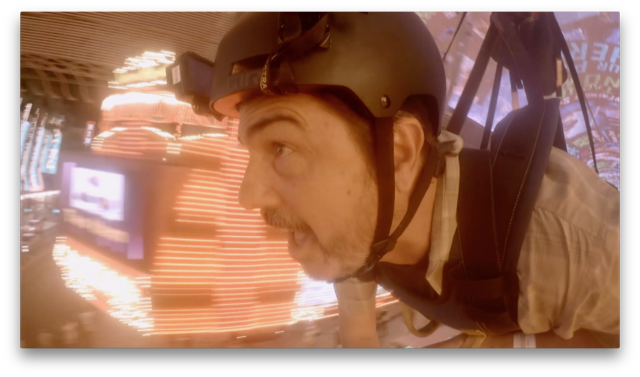
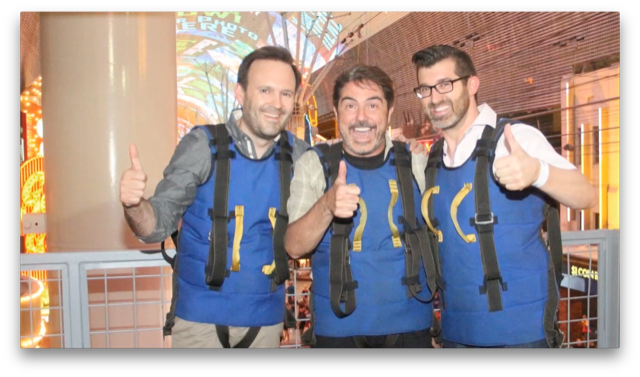
I actually went to visit Scott back in Vegas almost six months after we went on this ride. He still no longer had a fear of heights. He was basically cured from that one hour session. Crazy.
Now that technically proved nothing, but it sure makes me want to study it more…
I have since witnessed quite a few people being hypnotized and one thing they all have in common is that when they “wake up” they all look giddy, happy, and rested. The first thing everyone seems to do when emerging from hypnosis is smile. Why? I have no idea, but it seems more than a coincidence to me.
Recently a study out of Stanford Hospital took people in a hypnotized state and performed a functional MRI on their brains. The parts of the brain that were active under hypnosis were different than the active parts during wakefulness and during sleep. In other words, they discovered evidence of a different state of consciousness. Hmmm… Is this the subconscious brain? Maybe soon we can better delineate a physiological explanation for all of this and it won’t seem as descriptively vague as it sometimes does.
The mind is a powerful ally or enemy when it comes to certain medical conditions such as chronic pain, anxiety, and phobias. I have only discussed here about hypnotherapy in treating phobias, but it also seemed to be useful useful in many other contexts. Does it access a deeply complex subconscious mind that we are not even sure truly exists? Maybe hypnosis with the right suggestions puts the mind in a state where it can expect better outcomes? And sometimes in matters of health, our expectations control us more than any hypnotist ever could.

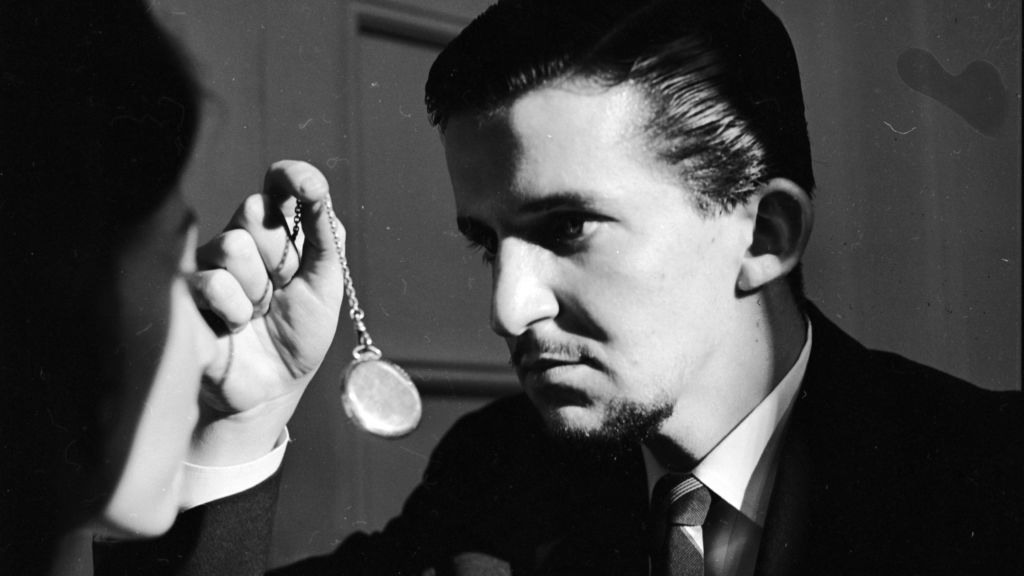
1 thought on “Hypnotherapy and a Vegas Zip Line”
Comments are closed.